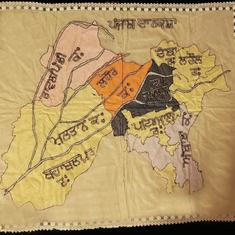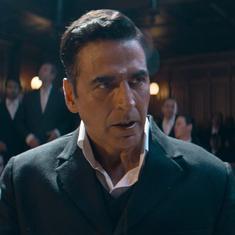On Sunday, VHP leader Nritya Gopal Das had performed a prayer ceremony of stones that arrived from Rajasthan at Kar Sevak Puram, the VHP’s headquarters at Ayodhya managed by the Ramjanmabhoomi Nyas, the organisation set up to promote the construction of the temple.
“Now the time has come for the construction of the Ram Mandir in Ayodhya,” Das told the media after the ceremony. “A lot of stones arrived today in Ayodhya and the arrival of stones will continue. We have signals from the Modi government that the Ram Mandir will be constructed now.”
Das' assertions raised the hackles of the main litigants in the dispute over the plot of land considered by Hindus as the birthplace of Lord Ram.
Twin concerns
“Nritya Gopal Das is a senior Vishwa Hindu Parishad leader and president of the Ram Janmabhoomi Nyas,” said Tarunjeet Lal Verma, counsel for the Nirmohi Akhara, the Hindu religious denomination that is one of the original litigants in the case. “His claim holds some weight. Now it is incumbent upon Modiji to come clean on this. His silence would mean he is part of the VHP’s move to subvert the judicial process in Ayodhya.”
The Akhara was in possession of the Ram Chabutara – a raised platform in the outer courtyard of Babri Masjid – in 1949 when the idol was surreptitiously planted in the mosque, triggering a series of litigations.
Other litigants were also peeved over the latest developments. “I want to know what the Prime Minister has to say on this,” said Hashim Ansari, the oldest litigant in the case. “Ever since independence, these people have been trying to convert the Babri Masjid into a Ram temple. They have been trampling the law of the land openly. The matter is in the court, and only the verdict of the Supreme Court will be acceptable to me.”
In 2010, the Allahabad High Court ruled that the 2.77-acre disputed land be divided into three parts between the Ram Lalla or Infant Rama represented by the Hindu Mahasabha for the construction of the Ram temple, the Islamic Sunni Waqf Board and the Nirmohi Akhara. The decision has been challenged in the Supreme Court by the Hindu Mahasabha and the Sunni Waqf Board. The Supreme Court has stayed the Allahabad High Court judgement and is currently considering the matter.
VHP vow
At a meeting in Ayodhya six months ago, the VHP had resolved to start a nationwide campaign to collect stones for building the Ram temple.
“About 2.25 lakh cubic feet worth of stones are required for the construction of the Ram temple,” VHP leader Ashok Singhal had said after the meeting in June. “More than half the required stones are ready at Kar Sevak Puram. The rest will be collected nationwide from Hindu devotees.”
As Singhal, who passed away last month, did not announce a timeline for the collection of stones, his June declaration and a VHP resolution along these lines generally went unnoticed until now.
Apart from the two main litigants in the case, the chief priest of the makeshift temple on the site where the 16th century Babri Masjid stood till 1992 has also voiced concern. Acharya Satyendra Das called the VHP’s latest move a “dangerous means to divide society” ahead of assembly elections in Uttar Pradesh, scheduled to be held in early 2017.
“The VHP is an organisation interested not in a temple for Ram but in communal politics keep society divided,” he said, backing the demand of the litigants that Modi must clear the air sooner rather than later. “Otherwise, he would be seen to be part of the VHP’s efforts to divide society.”










